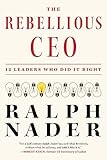On June 26th, 2012 the Wal-Mart PR team drove home the point of their plans to open a new store in Chinatown (Los Angeles) with a special cultural touch, a traditional Lion Dance, using dancers from the East Wind Youth Foundation, to ward off bad luck because of two decades of vacancy in the building they intend to occupy. Wal-Mart has been paying big money to PR firms as part of its revived efforts to invade the untapped LA market.
The big PR event occurred just four days prior to an anticipated, June 30th, largest-ever anti-Wal-Mart demonstration, including several LA acclaimed musicians, and three Grammy winners, in support of an effort to stop Wal-Mart from opening in Chinatown and expanding across LA.
Local LA residents consider Chinatown a “special treasure,” and some of the neighborhood elders boast of how much it means to take their grandchildren to the same Chinatown they remembered visiting as children. Now, opponents say the retailer will hurt local traditional businesses, lower wages across the board, and compromise the spectacular cultural character of the neighborhood.
In this regard, as recently as March 2012 the LA City Council voted 13-0 to ban chain retailers from Chinatown, but the vote turned into token opposition because Wal-Mart obtained its building permits at 5 p.m. the night before the crucial vote. “It is an outrage that they managed to pull a number of permits at 5 p.m. the last night. It just demonstrates how Wal-Mart works, with a number of resources behind them,” declared Aiha Ngyun, senior policy analyst for the LA Alliance for a New Economy, which organization leads the fight to block the behemoth’s encroachment on the City of Angels.
At a pre-emptive protest rally in LA in March 2012, Wal-Mart employee Greg Fletcher stood on the dais, holding up an enlarged image of his Medi-Cal card, saying, “This is my Medi-Cal card. I would like to thank my fellow citizens of California for providing benefits that my employer won’t.” Fletcher went on to explain to the crowd that he works full-time hours as a part-time associate. Gersayla Green, a Wal-Mart Supervisor said, “I do not make enough money to get off county healthcare and welfare. When Wal-Mart promotes you, they basically make you do more work for the same pay.”
Cesar Michel, a welfare worker at the Department of Public Social Services in LA is ‘terrified’ about Wal-Mart coming to Chinatown: “We know and have seen that Wal-Mart has encouraged its employees to apply for welfare and Medi-Cal at some of our offices… LA can’t afford the costs of Wal-Mart in town. With huge budget cuts… we already are stretched thin….”
Cynthia Brambila, a single mother and grocery store worker at Vons Super Market located at Sunset and Virgil in LA addressed the same rally, expressing her love for her job at Vons, which provides full benefits and enough wages to take care of her daughter. She expressed concern Wal-Mart may jeopardize jobs like hers.
These testimonials beg the big question: Does Wal-Mart hurt communities and cost jobs rather than create jobs?
According to a “Walmartization of New York City Study” the answer is emphatically, YES, it does. The study discovered Wal-Mart hurts/destroys small businesses and leads to net job losses, not job increases, while lowering the standard of wages for all. According to one vocal critic, “Wal-Mart comes in and lowers prices on the backs of worker’s slave wages and puts every mom and pop business out of business. They are bad for communities.”
Chicago’s West Side got Walmartized in 2006 when the retailer promised to bring jobs into the cash-strapped area. Subsequently, Loyola University conducted a landmark study. Results: Within two years of Wal-Mart opening its doors, 82 local stores went out of business. Instead of growing the retail economy, Wal-Mart overtook it by absorbing it. The study showed Wal-Mart generated no new sales revenue and no new jobs, but it did eliminate 82 small businesses, mostly family-owned by locals.
It is absolutely amazing how Wal-Mart continues to hoodwink local communities across the planet because, according to a detailed study by Neumark, Zhang, Ciccarella, The Effects of Wal-Mart on Local Labor Markets, “for every two jobs Wal-Mart creates, three local jobs are destroyed.”
In point of fact, there are hundreds of studies, maybe thousands, in the public domain that are anti-Wal-Mart; however, Wal-Mart continues to exist as one of the world’s biggest corporations; it is one of corporate America’s great success stories. As a matter of interest, six Walton family members have wealth equivalent to the bottom 30% of the entire population of America. This is one of the greatest, maybe the absolute greatest-ever, ironies in the history of capitalism because the six wealthy Walton families achieve their wealth by depending upon tens of millions of families that get by on a shoestring.
Of course, the issue with Wal-Mart is not the company’s status as a legitimate enterprise; the issue is credibility, fair play, and integrity of operations because the hickey on Wal-Mart is tactics, sneaky tactics, e.g., in Burbank, CA, where Wal-Mart purchased a space formerly occupied by The Great Indoors, residents with questions about Wal-Mart’s intentions attended a preliminary meeting. Wal-Mart representatives could not answer the most basic of questions. The local residents were then asked to submit their questions on cards and were told they would get back to them with answers. In turn, Wal-Mart used these cards for PR purposes, stating they were supporters of their enterprise… Huh?
Wal-Mart is probably one of the most disliked corporations in the world, but actually, a better characterization is: Wal-Mart is the most controversial corporation in the world with more cynicism and sarcasm surrounding its image than any other corporation… ever! Even their everyday low pricing is, in part, a sham, as exposed by studies demonstrating how the company lures shoppers with upfront special pricing but throughout the store pricing is not as competitive as advertised upfront.
The Wal-Mart formula for success is more dependent upon psyching-out consumers, i.e., embedding their message of low pricing into the public mindset, than it is based upon competitive pricing. Thus, the end message with Wal-Mart is one of chicanery and methodologies that brainwash the pubic into believing only the ‘Mart’ has special deals. By all accounts, this has been an extraordinarily successful formula.
Speaking of success, or lack of it, the LA City Council has proven how easily good intentions can slip right thru one’s fingertips when confronted with a smarter, conniving opponent and/or how the City Council’s lame preparations led to horrendous misfortune. The City Council’s failure, or hoped for good luck at the end of the day, ultimately depends upon which fortune cookie is cracked apart… Chinatown or Wal-Mart.










